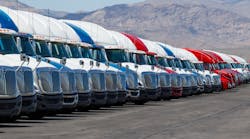Almost every day, new technology is designed to improve fuel economy, safety, productivity, and the driver’s experience.
The number of various components to spec on a new truck can be overwhelming. Some fleets will stick with tried-and-true vehicle specs, while others are “all in” with every new technology that comes on the market.
When looking at a new technology, there is no one-size-fits-all solution that will work for every aspect of your operation. However, there is a balanced, sensible process for fleets evaluating new technologies.
See also: How to identify the right filter for your fleet
Seeking out independent, unbiased information, including leveraging existing relationships with suppliers such as OEMs, dealers, financing partners, and service providers, is a great place to start. Suppliers will be familiar with your operation and can provide insight into whether the adoption of an innovation makes sense.
Look at your fleet’s duty cycles and operational characteristics to determine if a new technology is well-suited for the application. Electric vehicles, for example, do not make sense for long-haul operations because there is not a national charging infrastructure. But BEVs are a great solution for short-haul route delivery operation.
Consider the serviceability of any new technology before making an investment. What is the new technology going to cost to maintain and repair? If repairs are costly or time-consuming, the technology might not be right for you. Maintenance staff training is also something to consider.
See also: The right information leads to better inventory management
Set measurable KPIs to quantify expectations, and if the technology performs well, a large-scale rollout can begin. However, do so within the parameters of your normal trade cycle.
A measured approach will ensure that your technology investments are right for your fleet, improving productivity, efficiency, and safety—as well as delivering the right ROI.
Patrick Gaskins, SVP of Corcentric Fleet Solutions, oversees both sales and operations for the company's fleet offerings. Gaskins joined the company in 2010, bringing more than 30 years of experience as a financial services professional in the transportation industry. He leads a team that works with a supply base of more than 160 manufacturers to help the country’s largest fleets manage all aspects of their fleet operations and fleet-related spend.




